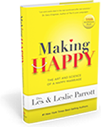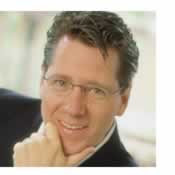Tom and Laura came to see us just nine months after their wedding. They had swallowed the happily-ever-after myth whole and were now feeling queasy. “Before we got married we couldn’t bear to be apart from one another,” Laura confided. “We did almost everything together, and I thought that’s how it would be in our marriage, even more so.” She paused for a moment. “But now Tom needs more space. It seems like he’s not the guy I married.”
Tom rolled his eyes as Laura continued: “He used to be so considerate and thoughtful before we were married” “Oh, and I’m a total slouch now?” Tom interrupted. “Of course not, you or maybe we are just different now.” Nervously twisting his wedding band, Tom looked at Laura: “Marriage isn’t what I expected either. I didn’t expect it to be a big honeymoon or anything; I just thought you would try to make life a little easier for me. Instead, when I come home from the office, all you want is to go out or”
“I make dinner every night for you,” Laura interrupted. Surprised by their display of unrestrained emotion in front of us, they stopped silent and looked to us as if to say, “See, our marriage isn’t what it’s supposed to be.” Tom and Laura entered their marriage believing that happiness would abound. They had heard that marriage was hard work, but they didn’t expect it to be a twenty-four-hour, seven-day-a-week job.
The belief in a happily-ever-after marriage is one of the most widely held and destructive marriage myths. But it is only the tip of the marital-myth iceberg. Every difficult marriage is plagued by a vast assortment of misconceptions about what marriage should be.1 In this chapter, however, we consider only those ideas that are most harmful and most common:
1. “We expect exactly the same things from marriage.”
2. “Everything good in our relationship will get better.”
3. “Everything bad in my life will disappear.”
4. “My spouse will make me whole.”
The goal of this chapter is to take the mythology out of marriage. For too long, marriage has been saddled with unrealistic expectations and misguided assumptions. Liberated from these four myths, couples can settle into the real world of marriage with all its joys and sorrows, passion and pain.
Myth One: “We Expect Exactly the Same Things from Marriage”
What we anticipate seldom occurs, what we least expect generally happens, especially in marriage. Saying “I do” brings with it a host of conscious and unconscious expectations that aren’t always fulfilled.
Neil and Cathy, a couple in their late twenties and married for four years, each had a clear image of what life together would be like, but they had never discussed their ideas. They, like most newlyweds, simply assumed the other had an identical picture of marriage in mind. Nothing, however, could have been further from the truth.
Cathy: “I expected married life to bring more stability and predictability to our lifestyle. To me it meant working in the garden together.”
Neil: “I wanted our marriage to be exciting and spontaneous, not a ho-hum routine. To me it meant riding a motorcycle together.”
As far back as early childhood, Neil and Cathy began dreaming of how married life would be. They grew up in homes where parents modeled “married life.” They read books describing loving relationships. They watched television shows and movies depicting scenes from marriage. For years they had fantasized about life after crossing the threshold. With little effort, each had formed an idea of what it would and should be like to live as a married couple.
Consciously and unconsciously, Neil and Cathy painted brushstrokes on their mental marital canvases. But it never occurred to either of them that the other might be working from a different palette. They simply assumed their life-long partner would work with complementary colors and in a similar style.
The first year of marriage, however, revealed sharp and unexpected contrasts. What Cathy thought of as security, Neil thought of as boring. They valued many of the same things, but with different levels of intensity. Cathy painted carefully with delicate pastels; Neil painted boldly with primary colors.
Most incongruous expectations fall into two major categories: unspoken rules and unconscious roles. Bringing both of them out into the open can save years of wear and tear on a young marriage.
Unspoken Rules
Everyone lives by a set of rules that is rarely spoken but always known. Needless to say, unspoken rules become more vocal when our spouse “breaks” them. This became painfully obvious to us when we visited our families for the first time as a married couple.
One Christmas, we flew from Los Angeles to Chicago to be with our families for the holidays. The first night was at my (Leslie’s) house. As was my family’s custom, I woke up early in the morning to squeeze in every possible minute with my family. Les, on the other hand, slept in.
I interpreted Les’s sleeping as avoidance and rejection and felt he did not value time with my family. “It’s embarrassing to me,” I told Les. “Everyone is up and eating in the kitchen. Don’t you want to be with us?”
Les, on the other hand, didn’t understand my intensity. “What did I do? I’m just catching up from jet lag. I’ll come down after my shower,” he said. As I found out later, Les expected a slower, easier pace during the holidays, because that’s the way it was at his house. In this incident, Les had broken a rule he didn’t know existed, and I discovered a rule I had never put into words. Both of us felt misunderstood and frustrated. We both had our own ideas about what was acceptable, and it never occurred to either of us that our expectations would be so different. Each of us became irritated by the other’s unspoken expectations and frustrated that the other did not live by the same rules.
Since that first Christmas we have learned to discuss our secret expectations and make our silent rules known. We have also helped the couples we counsel to become more aware of their own unspoken rules, to keep little problems from becoming big ones.
From Saving Your Marriage Before It Starts,Copyright © 1995 by Les Parrott and published by Zondervan. Used with permission.
Drs. Les and Leslie Parrott are codirectors of the Center for Relationship Development at Seattle Pacific University (SPU), a groundbreaking program dedicated to teaching the basics of good relationships. Les Parrott is a professor of clinical psychology at SPU, and Leslie is a marriage and family therapist at SPU.
The Parrotts are authors of the Gold Medallion Award-winning Saving Your Marriage Before it Starts, Becoming Soul Mates, Love Is, Relationships, and When Bad Things Happen to Good Marriages. They have been featured on Oprah, CBS This Morning, CNN, and The View, and in USA Today and the New York Times. They are also frequent guest speakers and have written for a variety of magazines. They live in Seattle, Washington, with their two sons.



 Les Parrott III, Ph.D., is founder of RealRelationships.com and a Professor of Psychology at Seattle Pacific University. He is also co-creator, with his wife Leslie, of eHarmony Marriage. Les is an award-winning author of more than a dozen best-selling books including High-Maintenance Relationships, The Control Freak, 3 Seconds, Becoming Soul Mates, Your Time Starved Marriage and Saving Your Marriage Before It Starts.
Les Parrott III, Ph.D., is founder of RealRelationships.com and a Professor of Psychology at Seattle Pacific University. He is also co-creator, with his wife Leslie, of eHarmony Marriage. Les is an award-winning author of more than a dozen best-selling books including High-Maintenance Relationships, The Control Freak, 3 Seconds, Becoming Soul Mates, Your Time Starved Marriage and Saving Your Marriage Before It Starts.





